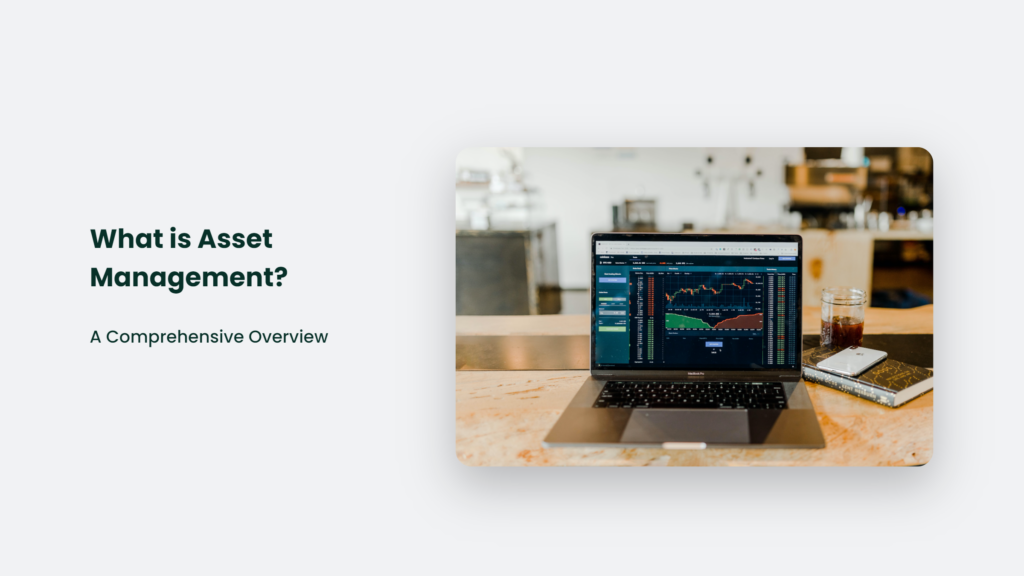Asset management is managing investments on behalf of clients to achieve their financial goals. It involves making investment decisions, monitoring portfolios, and reporting and advising clients. “asset management” encompasses many types of financial services and products.

What is Asset Management?
Asset management firms help individuals and institutions invest their money wisely. They employ professionals like financial analysts, portfolio managers, and wealth advisors to provide specialized services to clients. The most common types of asset management include:
- Investment Management: Making investment decisions and constructing securities portfolios like stocks, bonds, and other assets to meet client objectives.
- Wealth Management: Providing high-net-worth individuals with tailored investment management, financial planning, banking, and other services.
- Retirement Planning: Helping individuals invest and plan for retirement through vehicles like 401(k)s, IRAs, and pensions.
- Institutional Asset Management: Managing investments for corporations, endowments, sovereign wealth funds, and nonprofits.
The goal across all types of asset management is to use expertise and access to grow and preserve client assets over time. “Our job as asset managers is to find the right investments to match each client’s financial situation and goals,” says Michael Smith, a portfolio manager at Asset Management Co.
The Asset Management Process
Asset management involves several key steps:
Understanding the Client’s Needs
This first step is critical – asset managers must develop a deep understanding of each client’s investment objectives, risk tolerance, time horizon, liquidity needs, tax considerations, and other unique circumstances. It is achieved through detailed conversations and profiling questionnaires.
Developing the Investment Policy
A written investment policy statement or IPS codifies the client’s investment objectives and constraints. This guiding document establishes the investment philosophy, asset allocation, risk tolerance levels, and other parameters for managing the client’s portfolio.
Implementing the Investment Strategy
Portfolio managers construct customized portfolios designed to maximize returns within the framework of the IPS. It involves research, financial modelling, and experience to select the mix of asset classes, individual securities, investment vehicles, and strategies.
Diversification is key – portfolios are built using varied assets like stocks, bonds, real estate, commodities, and cash to balance risk versus return.
Monitoring and Rebalancing
Asset managers continuously monitor portfolios, asset classes, and individual holdings to ensure proper investment strategy implementation. When allocations drift from targets due to market movements, periodic rebalancing is done by selling overweight assets and buying those underweight.
Reporting and Client Service
Frequent reporting gives clients transparent visibility into investment performance, holdings, transactions, fees, taxes, and other portfolio details. Ongoing discussions keep clients informed and aware of progress towards their goals.
The Benefits of Asset Management
There are many advantages to hiring professional asset managers:
- Expertise – They possess knowledge, experience, and resources that individual investors need to gain. It can lead to better investment decisions.
- Diversification – Asset managers invest across many securities, reducing portfolio risk. Individuals often have concentrated positions and need more diversification.
- Discipline – Emotions can cause poor investment decisions. Asset managers follow a disciplined process.
- Efficiency – Their trading acumen provides better pricing and execution versus individuals.
- Accountability – Ongoing reporting and reviews ensure accountability to client objectives.
- Access – Certain assets have high minimums or are hard to access. Asset managers provide access.
Asset Management Strategies and Approaches
Asset managers use various philosophies, styles, and strategies:
- Passive Management – Indexing and ETFs to track market returns at lower costs.
- Active Management – Stock picking and market timing to try to exceed market returns.
- Growth Investing – Focus on fast-growing companies expected to outperform.
- Value Investing – Buying undervalued stocks trading below intrinsic value.
- Income Investing – Prioritizing assets generating regular income.
- Quantitative Investing – Computer-driven models and statistical arbitrage strategies.
- Alternative Investing – Utilizing sophisticated assets like private equity, hedge funds, venture capital, real estate, infrastructure, and derivatives.
- Socially Responsible Investing – Investments aligned with ethical, environmental, and governance objectives.
The Asset Management Industry and Key Players
The asset management industry worldwide manages over $100 trillion in assets. Assets under management at the 25 largest global asset managers:
- BlackRock – $9.4 trillion
- Vanguard – $8.1 trillion
- State Street Global Advisors – $3.5 trillion
- Fidelity Investments – $4.3 trillion
Largest sovereign wealth funds like the Norway Government Pension Fund Global ($1.3 trillion) and large endowments like Harvard ($53 billion) are also major players.
In the U.S., assets are shifting from actively managed funds to passive index funds and ETFs. The “Big Three” passive managers – BlackRock, Vanguard, and State Street Global Advisors – collectively have over $20 trillion under management. Robo-advisors like Betterment and Wealthfront are disrupting wealth management.
Key Trends Reshaping Asset Management
Several trends are transforming asset management:
- Passive Investing – Ongoing shift from active stock picking to passive index-based strategies with lower fees.
- Alternatives – Institutional investors allocate more capital to sophisticated alternative assets and strategies.
- Outsourcing – Asset owners outsource more management to external asset managers with specialized expertise.
- Technology – Advanced data analytics, artificial intelligence, and digital platforms changing processes and capabilities.
- Sustainability – Growing demand for sustainable investing incorporating environmental, social, and governance factors.
- Consolidation – Merger and acquisition activity as asset managers gain scale.
- Regulation – Tighter supervision and increased transparency into fees, services, and incentives.
Frequently Asked Questions:
What are the main types of asset management?
The four primary types are investment management, wealth management, retirement planning, and institutional asset management. Each provides specialized services to different types of individual and institutional investors.
What qualifications does an asset manager need?
Asset managers typically have undergraduate degrees in finance or economics, MBAs, and/or specialized designations like the Chartered Financial Analyst (CFA) credential. Portfolio managers require experience and a track record of investment results.
How do asset management fees work?
Asset managers charge fees based on a percentage of assets under management, typically 1-2%. Wealth managers may also charge fixed or hourly fees. There are often minimum account sizes.
Conclusion
Asset management helps individuals and institutions invest capital wisely to meet financial objectives. Skilled asset managers provide expertise, diversification, discipline, investment access, and ongoing service that adds client value. Though a multi-trillion dollar industry, asset management remains focused on understanding unique client needs and goals above all else. With increasing reliance on sophisticated strategies and new technologies, the asset management industry continues to evolve – but the fundamental mission of guiding investors remains unchanged.




